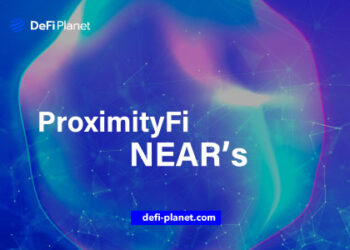Last updated on December 1st, 2021 at 05:29 pm
Introduction
For most in the crypto industry, solving the blockchain trilemma and achieving all three fundamental aspects of a blockchain, namely decentralization, scalability, and security, sounds like an impossible task that cannot be done. However, Algorand’s team of developers led by Silvio Micali, a computer scientist, and Turing award-winning cryptographer, and Massachusetts Institute of Technology (MIT) professor, believes that Algorand’s blockchain using the Pure Proof of Stake algorithm (PPos) can have all three and then some.
In this article, we will talk about what the blockchain trilemma is and how Algorand attempts to solve the issue.
Let’s dive in!
What Is The Blockchain Trilemma?
The blockchain trilemma is a concept introduced by Ethereum co-founder Vitalik Buterin that proposes challenges faced by the underlying structure of blockchains. According to the blockchain trilemma, when developers build a blockchain, they are forced to sacrifice one or make trade-offs to achieve the other two.
The 3 fundamental aspects of an open, permissionless blockchain include the following:
- Decentralization – Blockchain networks are not managed or controlled by a single authority. The control of the blockchain network is distributed equally among all network participants. Decentralization is the most important component of a blockchain network, and it is the feature that makes blockchain technology stand out from already existing technologies in the traditional finance world, where all the systems are centralized. Moreover, since decentralization passes the ownership of a blockchain network to the network participants, it is a vital feature to enable permissionless ownership, allowing anyone to build on the platform.
- Scalability – Scalability refers to the blockchain’s ability to support an increasing number of transactions without increasing transaction costs or succumbing to network congestion. It is perhaps the essential feature of blockchain technology needed for its mass adoption as it determines the number of transactions a blockchain can support. The importance of scalability is also highlighted by Ethereum’s move towards the Proof of Stake (PoS) from Proof of Work (PoW) algorithm as the team behind Ethereum believes this would make the blockchain more scalable, secure, and environment friendly. Moreover, Ethereum’s competitor blockchain networks like Solana are gaining popularity because of their scalability, which allows them to support a large number of transactions at high speeds and low costs. To focus on scalability, Solana compromises on decentralization. Furthermore, Ethereum’s scalability issues have seen the rise of many popular Layer 2 solutions like Polygon, which aims to make transactions on Ethereum more affordable.
- Security – The security of a blockchain is of the utmost importance, especially for the technology to gain acceptance as a viable solution to the problems faced by systems in the traditional finance world. Security refers to the blockchain’s ability to defend the network from malicious attacks, bugs, or hacks and operates as planned. The most potent threat to a blockchain’s security stems from its core features of being transparent and having open-source code. A blockchain network is only as strong as its underlying code, and because the code is open-source which can be accessed by anyone, it can become the prime target of hackers who can get lucrative benefits by attacking the blockchain.
Delegated Proof of Stake (DPoS) is believed to be one of the most scalable blockchain solutions. In a DPoS system, a select group of validators handle the addition of new blocks and thus make the system more scalable. However, skeptics believe that while DPoS is a more democratic approach than that of the centralized, traditional finance system, it is still far from being the ideal solution.
To date, many cryptocurrency projects and developers have tried to come up with a solution for the blockchain trilemma, but none seems to come close. However, Algorand Is a cryptocurrency project that claims to be solving the blockchain trilemma. How can Algorand scale the blockchain while being decentralized? Let us take a look.
How Does Algorand Solve The Blockchain Trilemma?
Silvio Micali, a Computer scientist, MIT professor, and the founder of Algorand protocol, appeared on Lex Fridman’s YouTube podcast and discussed the blockchain trilemma and how Algorand solves it.
Talking about Bitcoin and its scalability issues, Micali pointed out that since transactions on the Bitcoin blockchain need some time to get confirmed and finalized, it makes the blockchain slow and limits its ability to scale. In a world where time is of the essence, Micali said that for a blockchain to become mainstream, it needs to address global demand for quick transactions.
“The world is big, people want to interact with each other, and you better be prepared to have a ledger where you can write lots of transactions in this special way very, very quickly,” he said.
Moreover, he estimated that to meet the global demand, there needs to be a blockchain capable of supporting more than 1,000 transactions per second (tps). He believes that the blockchain should ideally match up to the capacity of ledgers used by the likes of VISA that have a throughput of 16,000 transactions per second on average and can even be scaled up to 40,000 transactions if needed. However, he believes that 1,000 tps is a fair number for a blockchain since it is decentralized, unlike the ledgers used by credit cards.
Algorand offers a blockchain that is scalable and yet decentralized enough by employing randomness.
Micali says that randomness is a powerful tool to achieve decentralization and prevent the network from a potential 51% attack.
By selecting validators randomly from Algorand’s token holders, the protocol can randomize the process of selecting validators that will add the new transactions with each block. This helps Algorand maintain its decentralized nature as the network relies on an algorithm to pick nodes and not the discretion of any central authority. Moreover, the selection process is random, and no one can predict who the next validators will be, which ensures that the blockchain network maintains its security.
By following this mechanism, Algorand limits the ways malicious attackers can possibly damage the network. Their only option would be to take a self-destructive approach and form a majority of token holders who want to damage the network. This, in practice, is impossible as none of the token holders will be interested in losing value. Micali explains this as follows:
“In Algorand, we do something a bit unorthodox – essentially, the token holders choose themselves at random. If you think about it, that seems to be a terrible idea, because if I’m a bad person, I’m going to select myself over and over again because I want to be part of the committee every single time.”
Algorand employs a novel Pure Proof of Stake (PPoS) consensus algorithm to ensure the random selection of validators, which makes the staking selecting process essentially like a lottery system. Here, every token holder is essentially pulling a slot machine lever, and if they win a ticket, they become one of the 1,000 token holders that have permission to add the next block in Algorand’s blockchain. Micali explains this system as a cryptographic lottery.
“Even if I am an entire nation, extremely powerful, with incredible computing power, I don’t have the ability to improve even minimally my probability of one of my tokens winning the lottery,” he said.
Thus, while every token holder pulls the slot machine, only 1,000 winners are selected randomly. Moreover, since this lottery happens once in one microsecond, the Algorand protocol can achieve scalability.
In Conclusion
- The Blockchain trilemma is a problem that plagues most existing blockchains in the crypto space. Algorand attempts to solve the blockchain trilemma by employing randomness with the help of its novel Pure Proof of Stake (PPoS) consensus algorithm.
So, what do you think about Algorand’s approach towards solving the blockchain trilemma? Do you think there’s a project that offers a better solution?
Comment below and let us know what you think!
If you would like to read more articles like this, follow DeFi Planet on Twitter and LinkedIn.




















